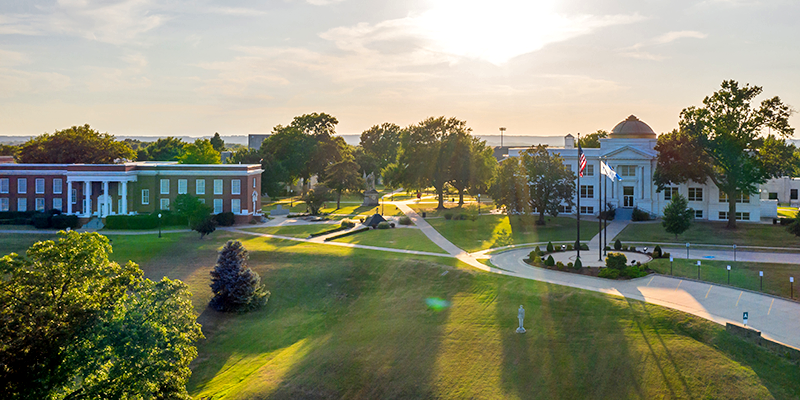
Due to confidentiality, the diagnosis of a student with a disability may not be shared with faculty or staff without a release of information from the student with a disability. Students are encouraged to speak with faculty and staff about their specific needs. The information regarding types of disabilities explains and offers suggestions to faculty members on how to provide equal access to students with a disability.
In a recent U.S. study, 428,280 postsecondary undergraduate students identified themselves as having disabilities, representing 6% of the student body. The types of disabilities reported by these students were:
- Learning disabilities – 45.7%
- Mobility or orthopedic impairments – 13.9%
- Health impairments – 11.6%
- Mental illness or emotional disturbance – 7.8%
- Hearing impairments – 5.6%
- Blindness and visual impairments – 4.4%
- Speech or language impairments – 0.9%
- Other impairments – 9.1%
Source: An Institutional Perspective on Students with Disabilities in Postsecondary Education, National Center for Educational Statistics, Postsecondary Education Quick Information System, August 1999.
A disability may or may not affect the participation of a student in your class. In postsecondary settings, students are the best source of information regarding their special needs. They are responsible for disclosing their disabilities and requesting accommodations. To create a welcome environment, include a statement on your class syllabus inviting students who require accommodations to meet with you. For example, “If you have a documented disability and wish to discuss academic accommodations, please contact me as soon as possible.”
Flexibility and effective communication between student and instructor are key in approaching accommodations. Although students with similar disabilities may require different accommodations, it is useful for faculty to be aware of typical strategies for working with students who have various types of impairments. With this basic knowledge you will be better prepared to ask students to clarify their needs and to discuss accommodation requests. Examples are listed below, followed by links to more detailed information.
Learning Disabilities are documented disabilities that may affect reading, processing information, remembering, calculating, and spatial abilities. Examples of accommodations for students who have specific learning disabilities include:
- Notetakers and/or audiotaped class sessions, captioned films
- Extra exam time, alternative testing arrangements
- Visual, aural, and tactile instructional demonstrations
- Computer with speech output, spell checker, and grammar checker
Mobility Impairments may make walking, sitting, bending, carrying, or using fingers, hands or arms difficult or impossible. Mobility impairments result from many causes, including amputation, polio, club foot, scoliosis, spinal cord injury, and cerebral palsy. Typical accommodations for students with mobility impairments include:
- Notetaker, lab assistant, group lab assignments.
- Classrooms, labs, and field trips in accessible locations.
- Adjustable tables, lab equipment located within reach.
- Class assignments made available in electronic format.
- Computer equipped with special input device (e.g., speech input, Morse code, alternative keyboard).
Health Impairments affect daily living and involve the lungs, kidneys, heart, muscles, liver, intestines, immune systems, and other body parts (e.g., cancer, kidney failure, AIDS). Typical accommodations for students who have health impairments include:
- Notetaker or copy of another student’s notes.
- Flexible attendance requirements and extra exam time.
- Assignments made available in electronic format, use of email to facilitate communication.
Mental Illness includes mental health and psychiatric disorders that affect daily living. Examples of accommodations for students with these conditions include:
- Notetaker, copy of another student’s notes, or recording of lectures.
- Extended time on assignments and tests.
- A non-distracting, quiet setting for assignments and tests.
Hearing Impairments make it difficult or impossible to hear lecturers, access multimedia materials, and participate in discussions. Examples of accommodations for students who are deaf or hard of hearing include:
- Interpreter, real-time captioning, FM system, notetaker.
- Open or closed-captioned films, use of visual aids.
- Written assignments, lab instructions, demonstration summaries.
- Visual warning system for lab emergencies
- Use of electronic mail for class and private discussions
Blindness refers to the disability of students who cannot read printed text, even when enlarged. Typical accommodations include:
- Audiotaped, Brailled or electronic-formatted lecture notes, handouts, and texts.
- Verbal descriptions of visual aids.
- Raised-line drawings and tactile models of graphic materials.
- Braille lab signs and equipment labels, auditory lab warning signals.
- Adaptive lab equipment (e.g., talking thermometers and calculators, light probes, and tactile timers).
- Computer with optical character reader, speech output, Braille screen display and printer output
Low Vision refers to students who have some usable vision, but cannot read standard-size text, have field deficits (for example, cannot see peripherally or centrally but can see well in other ranges), or other visual impairments. Typical accommodations include:
- Seating near front of class.
- Large print handouts, lab signs, and equipment labels.
- TV monitor connected to microscope to enlarge images.
- Class assignments made available in electronic format.
- Computer equipped to enlarge screen characters and images.
This information is provided by DO-IT (Disabilities, Opportunities, Internetworking, and Technology). DO-IT is a collaboration of Computing and Communications and the Colleges of Engineering and Education at the University of Washington. Primary funding for the DO-IT program is provided by the National Science Foundation, the State of Washington, and the U.S. Department of Education. For more information, visit http://www.washington.edu/doit/.
